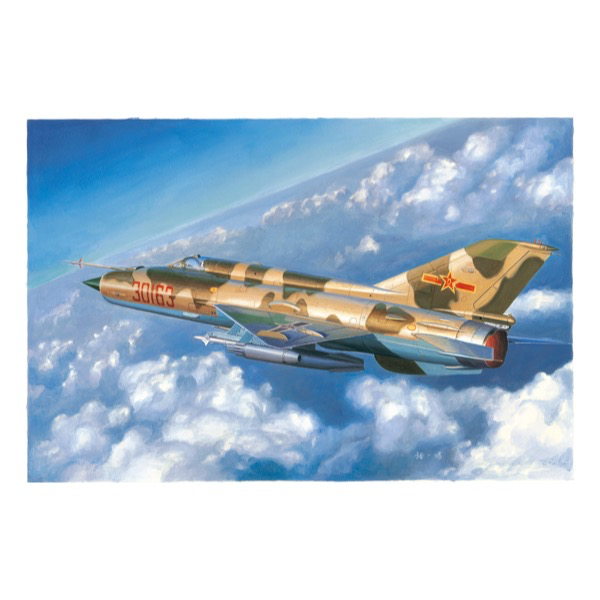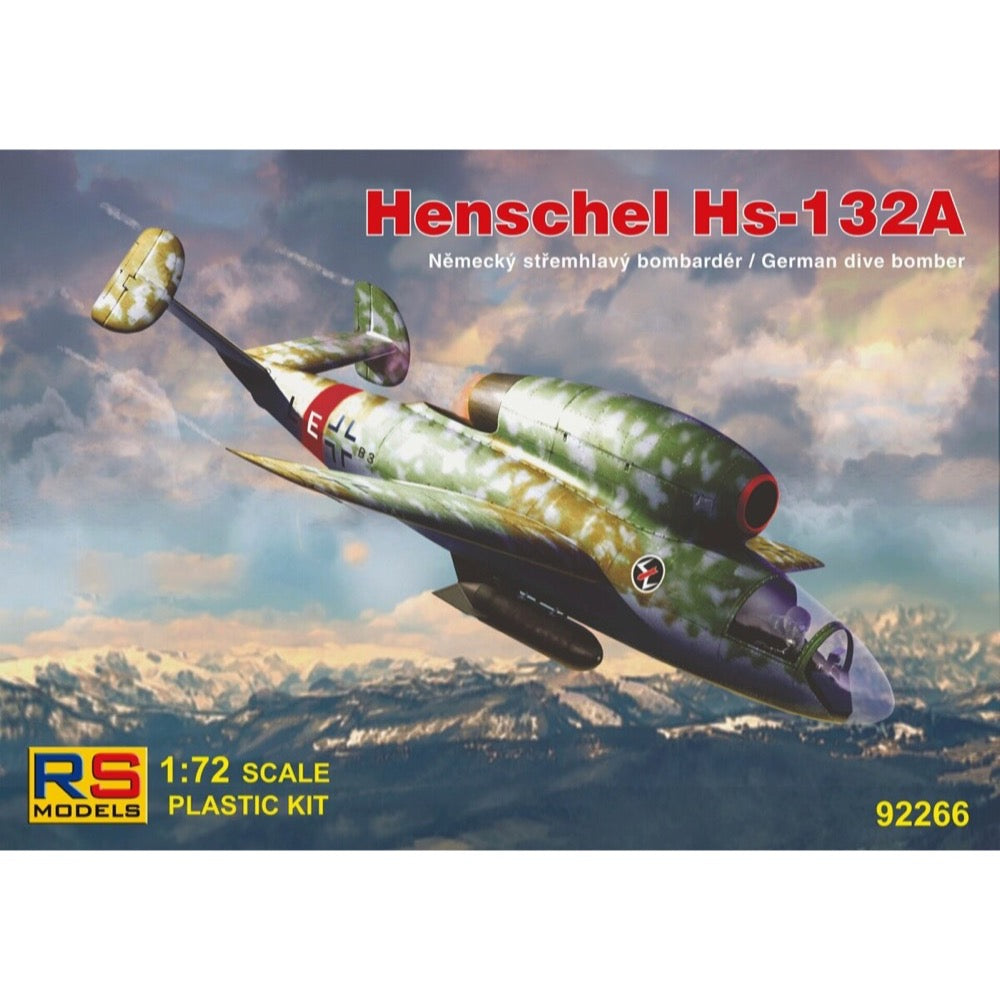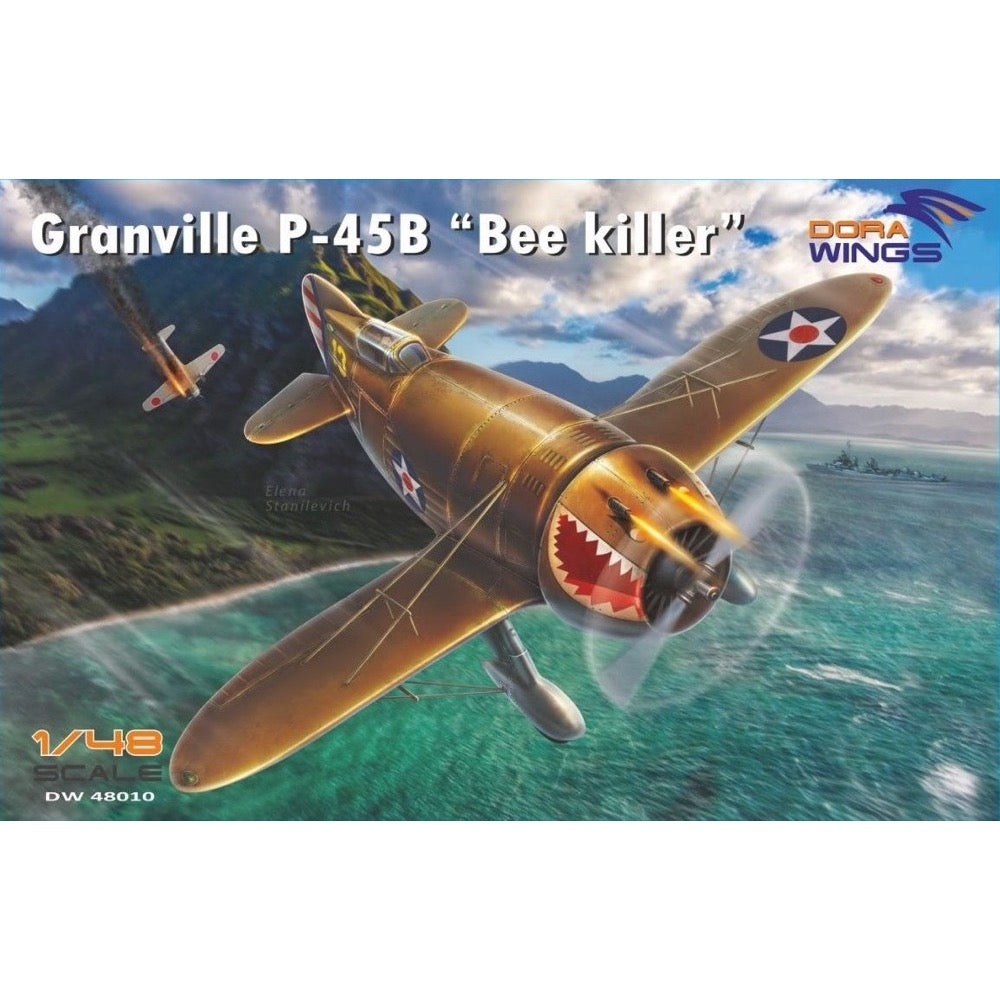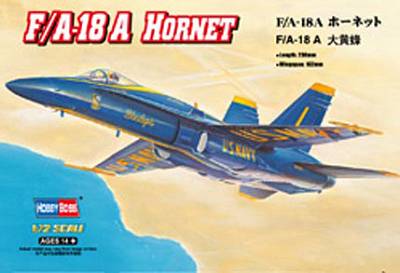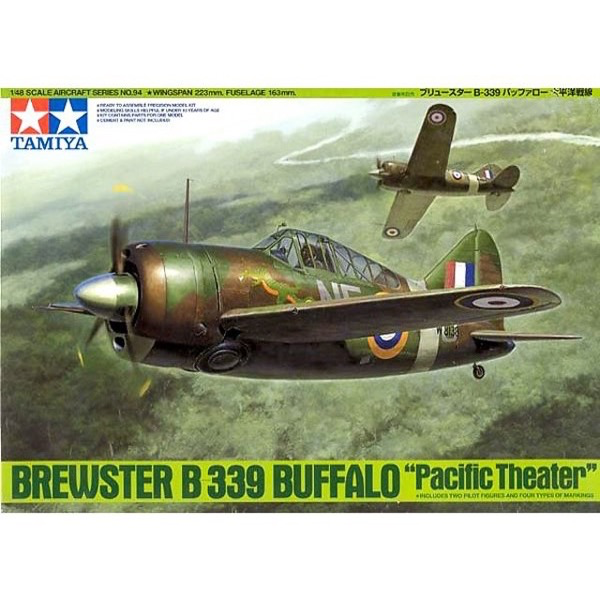
Tamiya 61094 1/48 Brewster B-339 Buffalo Pacific Theatre
14.00
$
<p>The Buffalo was first developed in 1935 as a U.S. Navy carrier based fighter. Featuring a modern mid-wing monoplane design with enclosed cockpit and retractable landing gear the first mass produced Buffalo was designated F2A-1, which was shortly followed by the improved F2A-2. Based on the U.S. Navy Buffalo, the B-339 Buffalo was for export only and was fitted with an export approved 1,100hp Wright Cyclone engine and redesigned for land use with navy equipment such as life raft and arrestor hook removed. The Royal Air Force (RAF) and the Netherlands East Indies Army Air Corps (ML-KNIL) used the B-339 to protect colonial outposts in Malaysia, Singapore and Java during WWII.</p>
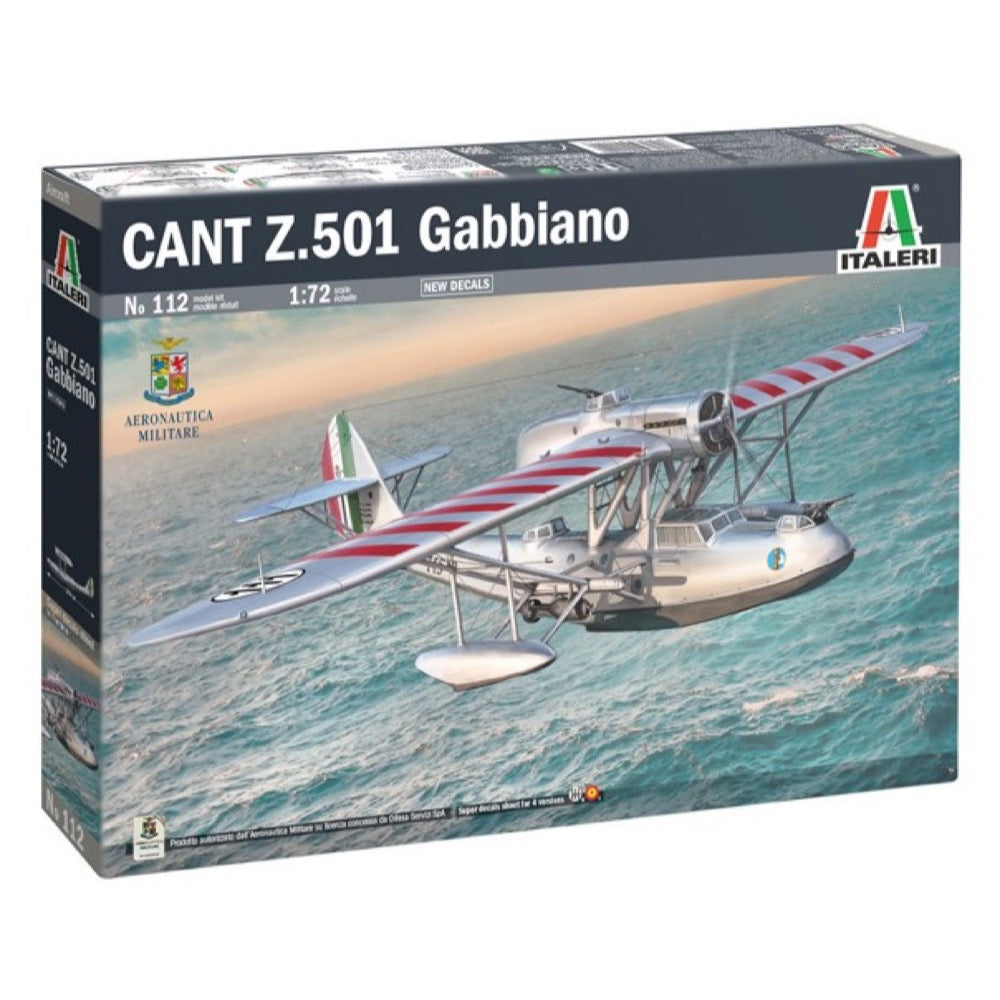
Italeri 0112S 1/72 Cant Z.501 Gabbiano
22.00
$
<p>The CANT Z.501 "Gabbiano" was a central-hull seaplane designed for maritime reconnaissance, developed by engineer Filippo Zappata for the Cantieri Riuniti dell'Adriatico (C.R.D.A.) in the 1930s. The aircraft's design featured a large high wing and lateral floats, making it suitable for patrol, search, and rescue operations at sea. It was powered by a 900 HP Isotta Fraschini Asso XI engine, providing good range and a maximum speed of 275 km/h. The CANT Z.501 began its operational service during the Spanish Civil War but was extensively used by the Regia Aeronautica during World War II in the Mediterranean theater. It was armed with three 7.7 mm Breda-SAFAT machine guns for defense against air attacks and could carry a limited offensive payload.</p>
<h3>Includes</h3>
<ul>
<li>New decals for 4 versions</li>
<li>Color instruction sheet</li>
</ul>
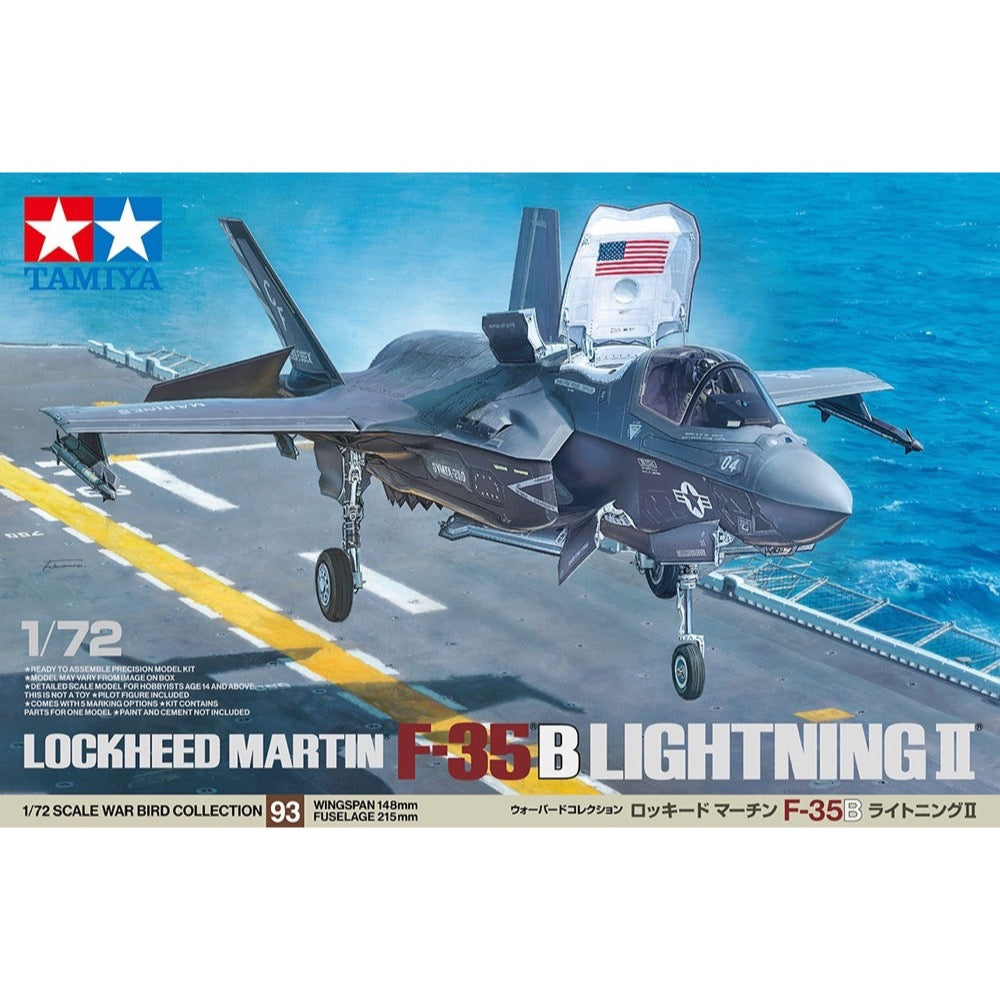
Tamiya 60793 1/72 Lockheed Martin F-35B Lightning II
30.00
$
<p>This model kit recreates the state-of-the-art F-35B Lightning II in easy to manage and display 1/72 scale. It inherits many of the detailed features first seen in our 1/48 scale release. Thanks to extensive research of the full-size subject, the B variant of the Lockheed Martin F-35 Lightning II model is poised to be the definitive model in 1/72 scale!</p>
<p>Developed under the Joint Strike Fighter (JSF) program , the F-35 integrates multiple functions into its design and there are three types: the F-35A conventional takeoff and landing (CTOL) aircraft, the F-35B short takeoff, vertical landing (STOVL), and the F-35C carrier takeoff and landing (CV). The F-35B was developed as a successor of the AV- 8B Harrier II. The F-35B is recognized as the aircraft which accomplished both supersonic flight and STOVL by the 3-bearing engine duct nozzle and lift fan, and following the F-35A, the F-35B deployment started in 2015. The first F-35B to see action was an aircraft belonging to the U.S. Marine Corps VMFA-211 “Wake Island Avengers” in Afghanistan, in September 2018. Not only the U.S. and the U.K. but also Italy employs the F-35B. The Japan Air Self-Defense Force also plans to launch a new fighter squadron with the F-35B from 2024 onward. As the F-35B can be operated from both aircraft carriers and airfields featuring short runways, many countries are considering its deployment, and the F-35B looks set to become a significant presence in the skies across the world.</p>
<p>The F-35 Lightning II is an ambitious 5th Generation aircraft that aims to meet the needs of different U.S. service arms via three different variants, perhaps the most adventurous of which is the F-35B which combines extremely low observability and exceptional situational awareness with short takeoff and vertical landing (STOVL) capability facilitated by a lift fan positioned between the engine and cockpit, that lets it operate from smaller confines such as amphibious assault ships, light aircraft carriers and airfields with limited runway space. Its deployment is planned not only by the U.S. Marine Corps, but also by U.K. and Italian air arms. Get a close look at what makes this fascinating aircraft tick with our detailed and accurate model in the manageable 1/72 scale.</p>
<h3>Features</h3>
<ul>
<li>1/72 scale plastic model assembly kit. Wingspan: 148mm, fuselage length: 215mm.</li>
<li>The kit recreates the vertical landing and can be assembled in two ways; landed or hovering and ensures superior assembly with dedicated angled door parts.</li>
<li>The parts faithfully depict a hovering aircraft with downward engine nozzle and opened doors.</li>
<li>Features realistic renderings of half-open two inner weapon bay doors and interior details such as ribs and pipes.</li>
<li>The nose landing gear and main landing gear can be depicted as extended (for hovering) or retracted (for landing).</li>
<li>The lift fan is integrated with nose landing gear bay, and the variable vane underneath is recreated in detail.</li>
<li>Shorter than on the F-35A, the engine nozzle is recreated by a single part.</li>
<li>The 3BSM (3 Bearing Swivel Module) is faithfully recreated with a dedicated parts breakdown for this kit.</li>
<li>RAM (Radar Absorbent Material) are molded into fuselage surfaces.</li>
<li>Clear parts recreate canopy and EOTS fairing under the nose.</li>
<li>Includes parts for AIM-9X Sidewinder x2 and AIM-120C AMRAAM x2.</li>
<li>Y-shaped air intake duct for highly advanced stealth characteristics.</li>
<li>Detailed cockpit, landing gear bays and roll posts.</li>
<li>Martin-Baker US16E ejection seat.</li>
<li>RCS (radar cross section) enhancers affixed to top and bottom sections during basic training exercises.</li>
<li>One pilot figure with the helmet mounted display (HMD).</li>
<li>A stand is included to use if you are making a hovering model.</li>
<li>Comes with 5 marking options from a total of three countries (United States Marine Corps, Royal Air Force, Italian Navy).</li>
<li>Includes masking stickers and a painting guide.</li>
</ul>
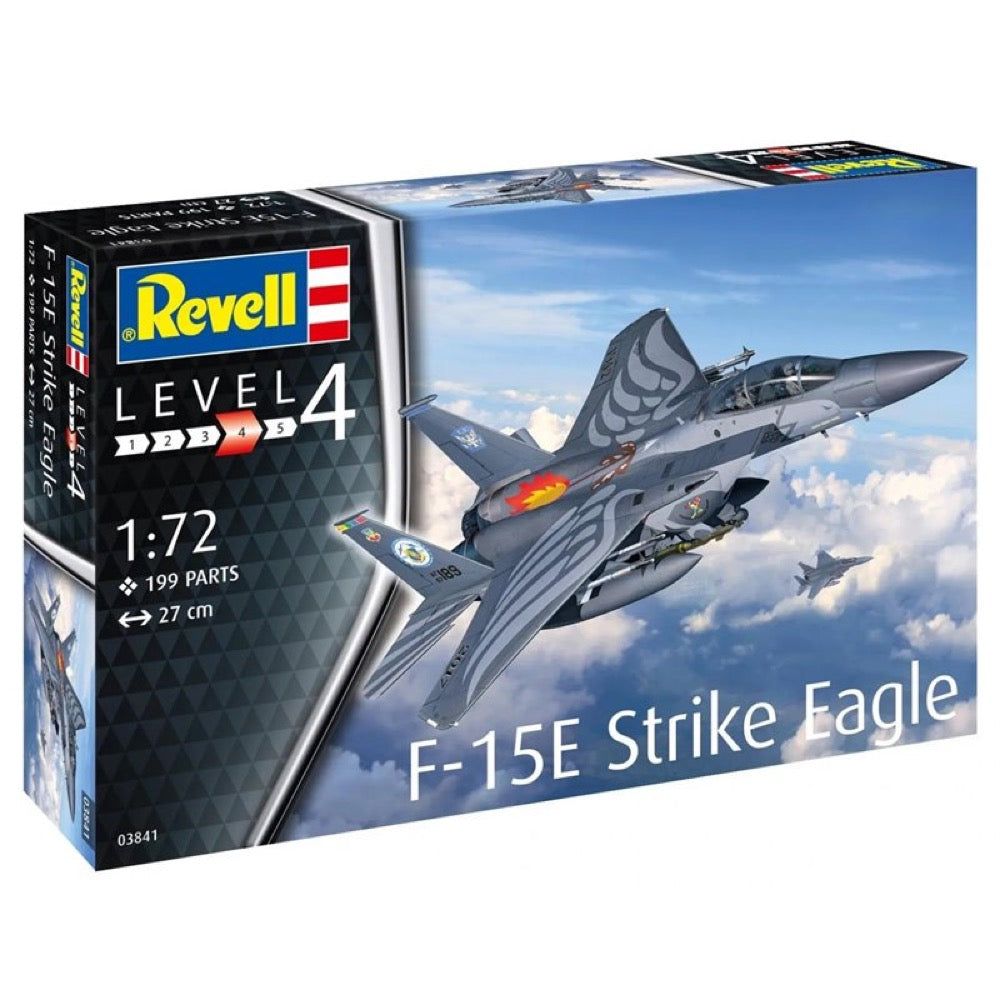
Revell 03841 1/72 F-15E Strike Eagle
27.00
$
<p>Although the F-15E Strike Eagle first flew in 1986 and the basic design is even older, it is still considered one of the best fighter-bombers in the world. It was used by the US Air Force in both the Second Gulf War and the Kosovo War.</p>
<h3>Features</h3>
<ul>
<li>
<p>Very detailed</p>
</li>
<li>
<p>Complete bomb loading</p>
</li>
<li>
<p>Missiles and external fuel tanks</p>
</li>
<li>
<p>Recent upgrades included</p>
</li>
</ul>
<h3>Scope of delivery</h3>
<ul>
<li>
<p>Plastic model kit (unassembled)</p>
</li>
<li>
<p>Illustrated, multilingual assembly instructions</p>
</li>
<li>
<p>Decals</p>
</li>
</ul>
<h3>Specifications</h3>
<ul>
<li>
<p>Age recommendation:12+</p>
</li>
<li>
<p>Number of parts:199</p>
</li>
<li>
<p>Length:270mm</p>
</li>
<li>
<p>Span:178mm</p>
</li>
</ul>
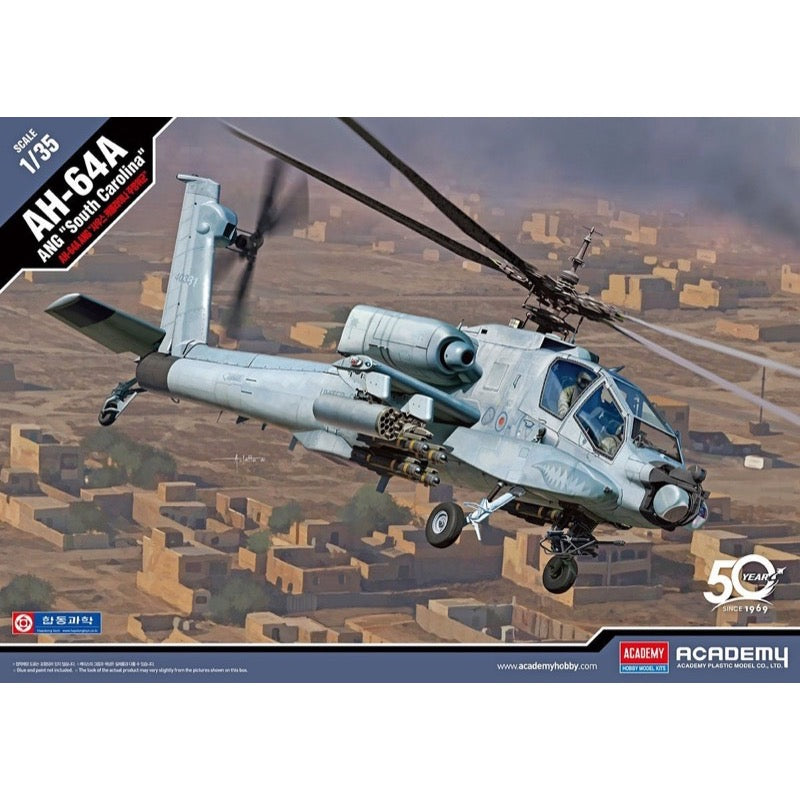
Academy 12129 1/35 AH-64A ANG "South Carolina"
23.00
$
<p>The McDonnell-Douglas (Boeing) AH-64 helicopter was selected as the winner in the competition with Bell's YAH-63 in December 1976. The name Apache stuck to the helicopter in 1981. This highly efficient machine has four-blade rotors driven by two General Electric T700-701 turbine engines with a capacity of 1696HP. The vestigial wings are fitted with conventional trailing edge flaps, and a plate tail improves longitudinal steering. The two-man crew takes seats one after the other in the armored cabin. The pilot's seat is in the rear, and the weapon operator / gunner is in the front. The key to the universal use of the helicopter are the TADS systems on the gunner's stand and the PNVS systems used by the pilot. The TADS is a target-tracking laser marker and rangefinder set and a forward-facing infrared sensor that is duplicated by the normal optics. The PNVS system is a developed FLIR system that allows you to pilot a helicopter just above the ground in order to prevent or delay detection by the enemy's anti-aircraft defense. Apache helicopters took part in the operation in Panama in 1989, during the Desert Storm in 1991, or the last conflict in Iraq (2003). At the end of 1990, the construction of a new version of the helicopter began, equipped with a Martin / Westinghouse Longbow millimeter radar installed above the head to control the weapons. It is used to control the Rockwell AGM-114 Hellfire anti-tank missiles. Technical data: Top speed: 300 km / h; climb speed 12.7 m / s, maximum range (without external tanks): 689 km, armament: 30mm Hughes M230A1 Chain Gun fixed-1 cannon, and outboard armaments - most often Hellfire missiles.</p>
<p>The AH-64A Apache is an attack helicopter that has been deployed by the U.S. Army since 1984. This model kit precisely reproduces the M261 rocket pod, the AGM-114 anti-tank missile, the rugged form equipped with a 30mm chain gun, and the front and rear tandem cockpit. Two kinds of decals are included -- the 59th Air Command 1st Battalion, and the 151st Air Regiment, belonging to South Carolina ANG (State Army( dispatched to Iraq.</p>
<h3>Features</h3>
<ul>
<li>Highly detailed cockpit with pilot & co-pilot seats</li>
<li>Fully engraved panel lines and embossed rivets</li>
<li>M261 rocket pods, AGM-114 ATGMs and 30mm chain gun included</li>
</ul>

RS Models 48006 1/48 Manshu Ki-79 B
33.00
$
<p>Nakajima delivered production jigs for the Ki-27 to Manshu HikÌ_ki SeizÌ_ KK in Charbin. There, production continued and gave another 1,379 aircraft. Manshu proceeded with the further development of this type, and so a training aircraft appears, on which pilots could train and switch to the combat type without having to change the habits they acquired during training. Because the training aircraft required an overpowered engine, a weaker power unit was installed and the cockpit was now open. The installation of a smaller and lighter engine shifted the center of gravity of the aircraft backwards, so it was necessary to extend the front of the fuselage by 200 mm.</p>
<p>The volume of the fuel tanks was reduced because the new engine had lower fuel consumption. The aerodynamic bonnets were launched and there was a fixed spur wheel at the end of the fuselage. In 1942, the Rikugun Koku Hombu adopted this type into the state under the designation: "continuing training aircraft type 2". The Manshu factory supplied two versions: the Ki-79a KÌ_ in a single-seater version, powered by an air-cooled star nine-cylinder Hitachi Ha-13a 1 cylinder with a take-off power of 515 horsepower. The two-seater version differed in the installed seats in a row and was designated Ki-79b Otsu. The single-seat Ki-79a was armed with a single machine gun Type 89 caliber 7.7 mm.</p>
<p>The two-seater version flew without weapons. The serial Ki-79a Ko and Ki-79b Otsu were used by many training units in Japan and the occupied countries. The Allies did not assign any code name to this type, as they judged that these were still variants of the fighter "Nate". the drive was provided by an air-cooled star nine-cylinder cylinder Hitachi Ha-13a 1 with a take-off power of 515 horsepower. The two-seater version differed in the installed seats in a row and was designated Ki-79b Otsu. The single-seat Ki-79a was armed with a single machine gun Type 89 caliber 7.7 mm. The two-seater version flew without weapons.</p>
<p>The serial Ki-79a Ko and Ki-79b Otsu were used by many training units in Japan and the occupied countries. The Allies did not assign any code name to this type, as they judged that these were still variants of the fighter "Nate". the drive was provided by an air-cooled star nine-cylinder cylinder Hitachi Ha-13a 1 with a take-off power of 515 horsepower. The two-seater version differed in the installed seats in a row and was designated Ki-79b Otsu. The single-seat Ki-79a was armed with a single machine gun Type 89 caliber 7.7 mm. The two-seater version flew without weapons. The serial Ki-79a Ko and Ki-79b Otsu were used by many training units in Japan and the occupied countries. The Allies did not assign any code name to this type, as they judged that these were still variants of the fighter "Nate".</p>
<p>The serial Ki-79a Ko and Ki-79b Otsu were used by many training units in Japan and the occupied countries. The Allies did not assign any code name to this type, as they judged that these were still variants of the fighter "Nate". The serial Ki-79a Ko and Ki-79b Otsu were used by many training units in Japan and the occupied countries. The Allies did not assign any code name to this type, as they judged that these were still variants of the fighter "Nate".</p>
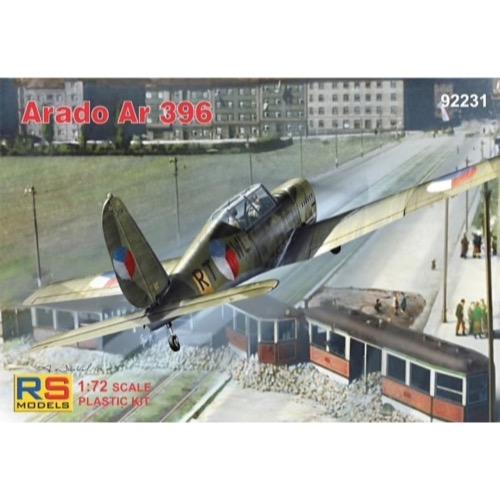
RS Models 92231 1/72 Arado Ar 396
13.00
$
<p>Arado has moved the development of the new Ar 396 to Société Industrielle pour l'Aeronautique in occupied France. German and French designers designed a simple wooden structure aircraft here, only the middle cabin part of the fuselage was designed as a lattice of steel tubes coated with a thin sheet of steel. Steel pipes were also in the wing beams. The air-cooled in-line twelve-cylinder Argus As 411 TA-1 with an output of 426 kW with a two-bladed automatically adjustable propeller was chosen as the drive. The aircraft manufacturer SIPA was to build three prototypes of the Ar 396 and 25 serial machines of the verification series.</p>
<h3>Features</h3>
<ul>
<li>Arado 396 RT+WL, Prague uprising, May 1945, German insignia overpainted by hand</li>
<li>Arado 396 V4, SO+DD, 4th prototype, tested in Paris, June 1944</li>
<li>Arado 396, NS+OA, Letov factory airfield, Prague, April 1945</li>
</ul>
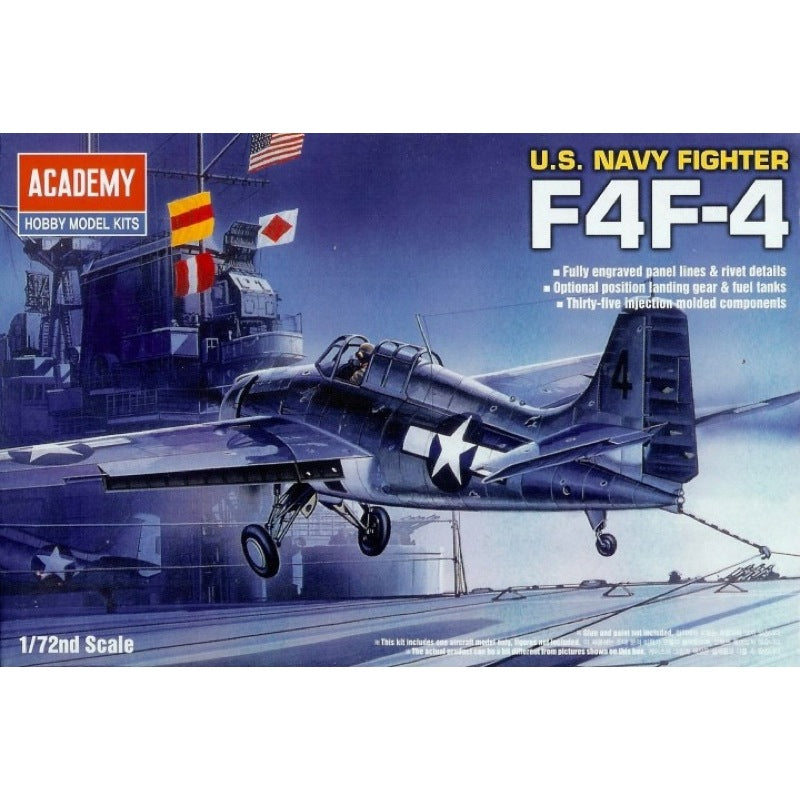
Academy 12451 1/72 F4F-4 Wildcat
6.00
$
<p>When the Japanese attacked the United States in 1941, the most modern fighter in the Navy was the Grumman F4F Wildcat.<br><br>Although the Wildcat was small. it was not as fast or maneuverable as the Japanese Zero fighter, but it was a very durable machine. However, in the hands of an experienced pilot, the Wildcat could best the feared Zero and the little Grumman fighter held its own against the enemy until the more powerful Hellcat was available about a year later.<br><br>The Wildcat had a top speed of 320 mph at 18,800 feet. It was armed with six. 50 cal machine guns and could carry bombs and, in later versions, five inch rockets.</p>
<p>This is an injection-plastic jet aircraft model kit.</p>


